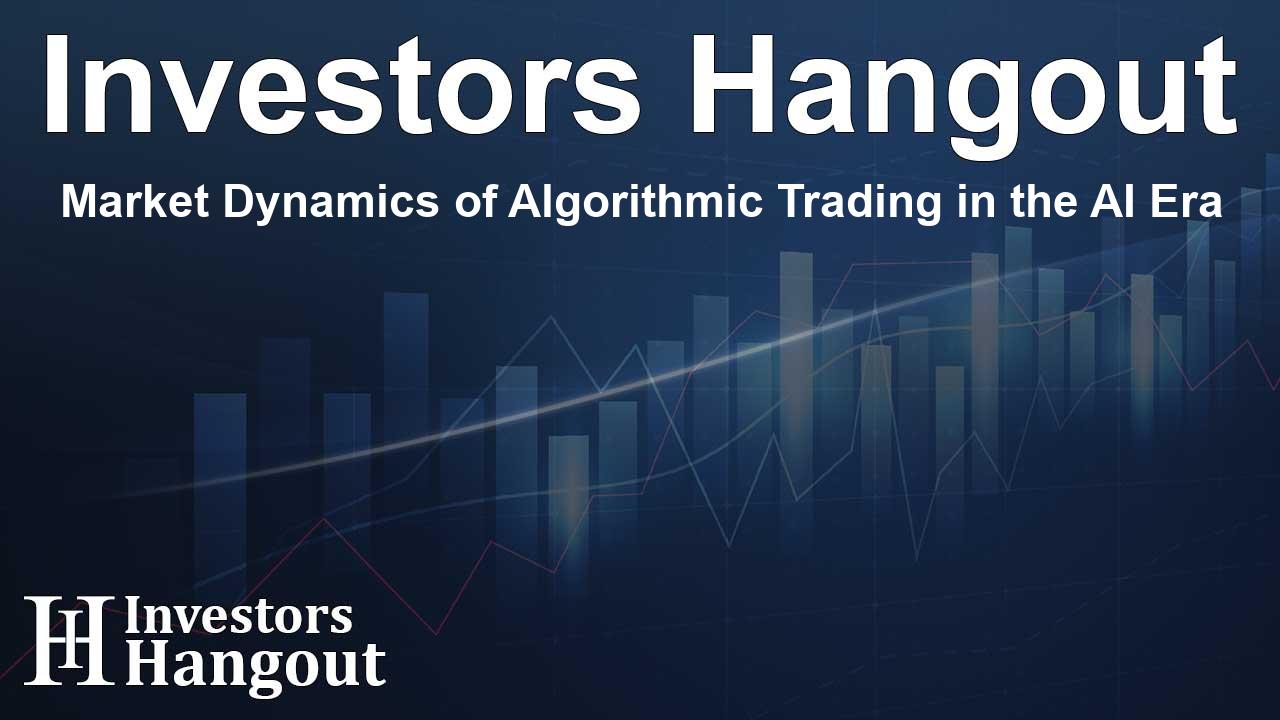Market Dynamics of Algorithmic Trading in the AI Era

Understanding the Growth of Algorithmic Trading
The global algorithmic trading market is set to see significant growth, with estimates projecting an increase of USD 15.33 billion from 2024 to 2028. This remarkable progress is largely fueled by the rising demand for automated trading solutions supported by artificial intelligence. As trading technologies evolve, the landscape continues to transform, offering both opportunities and challenges for market participants.
Key Market Drivers and Trends
At the forefront of this market evolution is the need for enhanced market surveillance, which has become a crucial component for investors today. The high demand for effective market monitoring technologies leads to a more secure trading environment as investors aim to stay ahead of potential risks.
The Impact of Advanced Technologies
Modern electronic trading technologies bring a multitude of benefits for both vendors and users alike. The aggregation of liquidity through algorithmic trading across various regions expands market access. This not only lowers trading costs but also improves execution times, thereby increasing overall trading volume.
Algorithmic Trading Explained
Algorithmic trading, often referred to as algo trading, utilizes complex algorithms and computer programs to make trading decisions in financial markets. This automated method of trading appeals to various institutions, including hedge funds and mutual funds, due to its speed and efficiency. Automated systems analyze vast databases of market data in real-time to execute trades, triggering actions based on predefined criteria.
Market Challenges and Risks
Despite its advantages, the algorithmic trading market is not without challenges. For instance, volatility in the markets can dramatically affect the accuracy of automated trading algorithms. Risk management becomes the cornerstone for success in high-stakes trading environments, as fluctuations and sudden market movements can lead to significant losses.
Regional Insights and Growth Opportunities
The algorithmic trading market is considerably fragmented. Each region, including North America, APAC, Europe, South America, and the Middle East and Africa, exhibits distinct trading characteristics. In particular, the Asia-Pacific region poses unique challenges due to wider bid-ask spreads, which can hinder trading efficiency.
The Importance of Transparency
As algorithmic trading practices expand, the demand for market transparency grows. This ensures accountability among trading entities and helps mitigate the risks associated with high-frequency trading and potentially destabilizing market events.
Segment Analysis in the Algorithmic Trading Market
The market can be segmented by components, end-users, and geography. Key segments include:
- Components: Solutions, Services
- End-users: Institutional Investors, Retail Investors, Long-term, and Short-term Investors
- Geographical Regions: North America, APAC, Europe, South America, Middle East and Africa
Future Outlook
As we look ahead, the algorithmic trading market is set for continued innovation, spurred by advancements in AI and machine learning. The integration of these technologies in trading firms facilitates seamless execution, greater accessibility, and an overall improvement in market dynamics.
Frequently Asked Questions
What is algorithmic trading?
Algorithmic trading refers to the use of computer programs and algorithms to automate trading decisions based on specific market conditions.
Why is AI important in algorithmic trading?
AI enhances decision-making processes by allowing algorithms to analyze large amounts of real-time data to identify trends and make predictions.
What are the key challenges facing algorithmic trading?
Volatility, market transparency, and the potential for flash crashes are significant challenges that need to be navigated carefully in this space.
How is the market expected to grow?
The algorithmic trading market is projected to grow by USD 15.33 billion from 2024 to 2028, indicating robust demand and evolution within the sector.
What segments dominate the algorithmic trading market?
The market is structured around components such as software solutions and services, along with institutional and retail investor segments.
About Investors Hangout
Investors Hangout is a leading online stock forum for financial discussion and learning, offering a wide range of free tools and resources. It draws in traders of all levels, who exchange market knowledge, investigate trading tactics, and keep an eye on industry developments in real time. Featuring financial articles, stock message boards, quotes, charts, company profiles, and live news updates. Through cooperative learning and a wealth of informational resources, it helps users from novices creating their first portfolios to experts honing their techniques. Join Investors Hangout today: https://investorshangout.com/
Disclaimer: The content of this article is solely for general informational purposes only; it does not represent legal, financial, or investment advice. Investors Hangout does not offer financial advice; the author is not a licensed financial advisor. Consult a qualified advisor before making any financial or investment decisions based on this article. The author's interpretation of publicly available data shapes the opinions presented here; as a result, they should not be taken as advice to purchase, sell, or hold any securities mentioned or any other investments. The author does not guarantee the accuracy, completeness, or timeliness of any material, providing it "as is." Information and market conditions may change; past performance is not indicative of future outcomes. If any of the material offered here is inaccurate, please contact us for corrections.